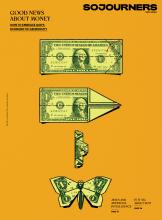ON APRIL 13, 2023, Ralph Yarl, a Black 16-year-old in Kansas City, Mo., went to pick up his younger siblings from a friend’s house. Mixing up the address, Yarl accidentally knocked on the door of an 84-year-old white man, Andrew D. Lester, who reacted by shooting Yarl in the head and then in the arm. Police took Lester into custody, only to release him without charges in less than two hours. As a result, protesters marched in Lester’s neighborhood, calling for his arrest. After days of protest, Lester was apprehended. In court, he pleaded not guilty, saying that he shot Yarl twice because he was “scared to death.” Yarl was in the hospital for three days before returning home to recover. In response to the shooting, Kansas City Mayor Quinton Lucas, who is Black, lamented, “You’ve heard about driving while Black ... Can you not knock on the door while Black? It’s almost like you can’t exist.”
In The Anarchy of Black Religion: A Mystic Song, J. Kameron Carter, a scholar of religion, English, gender, and African American studies, frames the current reality of modern Black suffering as “antiblackness,” or in his own words, “the settler colonial antiblackness of the religion of whiteness.” For Carter, antiblackness is the performance of a racial liturgy. This may sound strange to some readers — how can racism be religious, or liturgical? But what Carter is getting at is that there is a pattern — a ritual — to white violence against Black people. Lester’s shooting of Yarl was just one incident of this racial liturgy playing out. The murder of Jordan Neely by Daniel Penny in a New York subway car is another. They are all sacrifices on the altar of whiteness.
Read the Full Article

